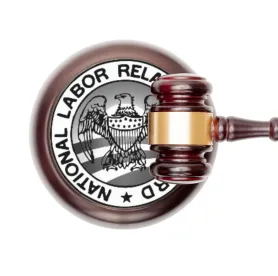It does not violate the National Labor Relations Act (NLRA) if an employer mistakenly misclassifies its employees as independent contractors, the National Labor Relations Board (NLRB) has decided. Velox Express, Inc., 368 NLRB No. 61 (Aug. 29, 2019). Chairman John Ring and Members Marvin Kaplan and William Emanuel were in the majority. Member Lauren McFerran dissented from the portion of the decision holding that misclassification is not a separate violation.
Employers no longer have to worry about incurring unfair labor practice liability if their classification of workers is mistaken.
Background
Velox Express operated a courier service. In 2016, it engaged drivers classified as independent contractors to drive to hospitals and other medical facilities to collect medical samples for diagnostic laboratories.
Jeannie Edge was an independent contractor driver for Velox until her contract was terminated in August 2016. Edge filed an unfair labor practice charge with the NLRB. In an unfair labor practice complaint, the NLRB’s General Counsel (the Board’s chief prosecutor) claimed that Edge was an employee, not an independent contractor, and that Velox had violated the NLRA: (1) by discharging her for engaging in protected concerted activity; and (2) by merely misclassifying its couriers as independent contractors.
After an unfair labor practice trial, Administrative Law Judge Arthur Amchan found the couriers were employees and not independent contractors. The judge applied the then-existing NLRB test for determining whether individuals are employees or independent contractors (FedEx Home Delivery, 361 NLRB 610 [2014]). Judge Amchan also decided the employer had violated the NLRA by virtue of its misclassification of the couriers as independent contractors. (The Board overruled FedEx Home Delivery in SuperShuttle DFW, Inc., 367 NLRB No. 75 [Jan. 25, 2019]. For more on the SuperShuttle decision, see our article, Labor Board Returns to Pre-2014 Test for Determining if Individual Is an Independent Contractor.)
Board Decision
Although SuperShuttle sets forth a test that is more likely than the previous one to lead to a finding that a worker is an independent contractor, the NLRB ruled the Velox couriers were employees. Therefore, they were protected by the NLRA and Edge’s discharge for complaining to management about misclassification of its drivers violated the NLRA.
However, the NLRB disagreed with the judge on whether merely misclassifying employees as independent contractors violated the NLRA. The NLRB determined that this case turned on the employer’s communication to its workers that they are classified as independent contractors, which invoked Section 8(c) of the NLRA.
Section 8(c) states:
The expressing of any views, argument, or opinion, or the dissemination there¬of, whether in written, printed, graphic, or visual form, shall not constitute or be evidence of an unfair labor practice …, if such expression contains no threat of reprisal or force or promise of benefit.
The Board ruled that an employer’s decision to classify its workers as independent contractors is privileged by Section 8(c) because it is the formation of a legal opinion regard¬ing the status of those workers. Further, the Board held, “the communication of that legal opinion is no less protected by Section 8(c) if it proves to be erroneous” because “[e]rroneously communicating to workers that they are independent contractors does not, in and of itself, contain any ‘threat of reprisal or force or promise of benefit.’”
“Standalone Misclassification” Violation Rejected
The Board rejected the argument for a “standalone misclassification” violation — that simply misclassifying an employee as an independent contractor inherently coerces employees in the exercise of their Section 7 rights, regardless of the employer’s intent. The Board called it “a bridge too far” to conclude that an employer coerces its workers by advising them they were classified as independent contractors.
The Board also discussed important legal and policy concerns that weighed against finding a standalone misclassification violation. Key among them were the many federal, state, and local laws and regulations that apply different standards to determine independent contractor status. An employer’s classification decision may be correct under certain laws, but incorrect under the NLRA. Thus, a standalone misclassification violation would assure substantial uncertainty and protracted litigation, which may cause employers to forgo independent contractor relationships. Moreover, Congress expressly excluded independent contractors from the definition of employee under the NLRA to preserve independent contractor relationships. In addition, in First National Maintenance Corp. v. NLRB, 452 U.S. 666, 679 (1981), the U.S. Supreme Court said that an employer “must have some degree of certainty beforehand as to when it may proceed to reach decisions without fear of later evaluations labeling its conduct an unfair labor practice.”
In keeping with the NLRA’s stated purpose to “eliminate the causes of certain substantial obstructions to the free flow of commerce” and to avoid creating new obstructions, the Board rejected the contention that a standalone misclassification violates the NLRA.







 />i
/>i

